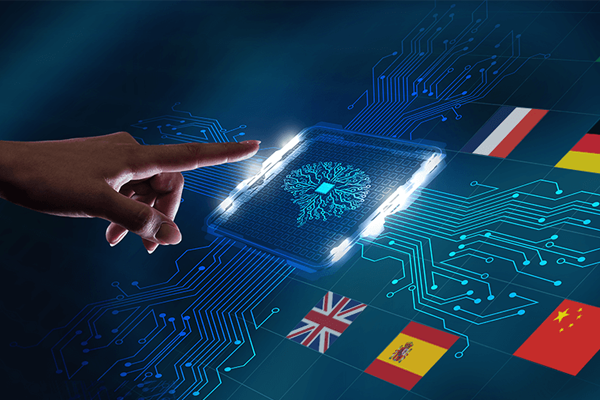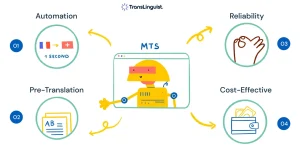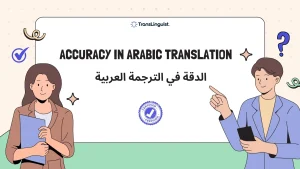In today’s fast-paced global landscape, language barriers can no longer be an obstacle to communication. AI Translator Tools are transforming the way individuals, businesses, and organizations access multilingual content with increased accuracy, speed, and convenience. These advanced systems leverage artificial intelligence to provide real-time translations across text, audio, and video formats, making language accessibility more seamless than ever before.
Among the leading innovations in this field is TransLinguist’s Voice Speech AI, a powerful solution designed to deliver high-quality translations with human-like clarity. By combining speech recognition, machine learning, and contextual understanding, it enables users to translate spoken content instantly and accurately. Whether for international meetings, customer support, or digital content localization, TransLinguist’s Voice Speech AI sets a new standard in multilingual communication—bridging languages at the speed of technology.
Speed in Language Access
With real-time global interaction shaping the world, the requirement for free-flowing communication across languages has become crucial. Language access is essential for multinational companies entering new markets or for hospitals requiring immediate translation services for non-English-speaking patients. And that’s where AI translator tools come at the price of the translation industry.
These tools are not only breaking language barriers; they change the paradigm of thinking on speed, accuracy, and accessibility.
The Changing Face of Translation: From Human to Hybrid
Until now, linguistics has been a solemn profession for linguists who have cultivated their sense of translation in deep cultural understanding over the ages of study. With the intricacies of translation still beyond computers, these human translators were always to be called upon for extremely delicate content: contracts, legal documents, literary works, and so on.
But then volumes of content and the age of instant access have both conspired to allow technology to help lead the way. AI-driven translator systems like Google Translate, DeepL, or Microsoft Translator have been designed to cover this important need. But most of the time, it is machine learning and neural networks that make billions of words a day processable, and that in no more than a second or two.
Speed: Competitive Advantage
It is, undoubtedly, a huge advantage of AI translator tools-the swiftness that makes automation within less than 3 minutes possible. International businesses can now have an instant multilingual site and respond to all customer queries in real time, alongside rapidly localizing all product information.
Even in emergency services, where seconds can indeed mean the difference between life and death, AI translators can be literal lifesavers. An app on a phone provides a way for a paramedic to talk to a person who speaks a different language – and it can be a life-saving hastening of a process, and in some cases, lives.
“Not Anymore”: Evolving Accuracy
Earlier versions of these tools for machine translation have constantly faced criticism in terms of accuracy. Well, that’s not anymore. Nowadays, with the combination of Natural Language Processing (NLP) and Neural Machine Translation (NMT), AI translators not only grasp context but also idioms and even tone.
DeepL, now, for instance, is recognized for producing translated texts that resemble the style.
For example, DeepL is one of the top catch-for-translating pieces stylistically and grammatically than most other engines, and this innovation proves applicable to any AI tool in terms of trustworthiness, especially when applied together with the post-editing function most human linguists perform: machine translation post-editing (MTPE). Generally, applications span across fields:
- Healthcare: Instantaneous provision of languages for patient admissions, telehealth interactions, and medical directions.
- E-commerce: real-time description of goods, reviews of customers, and multilingual support.
- Legal and government: Preliminary translation of case files, applications, or notices to the public.
- Education: To facilitate multilingual classrooms and virtual learning spaces.
The Human-AI Synergy
True, the AI translators work well. However, they are not perfect, as cultural nuances, sway-heavy terminology, and emotionally laden content often involve human interference. This is where human-AI collaboration comes into play.
Language service providers like TransLinguist embrace this hybrid model in which bulk translation is completed by AI while human experts ensure contextual and cultural appropriateness.
Challenges to Address
- Concern over cloud-based tools in terms of data privacy
- A lack of contextual understanding regarding complex texts
- Over-reliance on automation could give rise to inaccuracies in sensitive documents.
These should all be addressed using responsible AI, secure platforms, and ethical regimes.
Conclusions
AI translator tools revolutionized language accessibility, speed, and accuracy. As these tools mature, their role in global communication will become more and more essential. The best effects will always come from a tactful blend of technology and human expertise.
Get in touch now if you already have a well-established firm or global ambitions in your mind as a public service provider whose mission states inclusiveness, adopting AI translation, smart use, and ethical practice is no longer a matter of choice. This is the future of communication.
FAQs
What are AI Translator Tools?
AI Translator Tools are software systems that use artificial intelligence to translate text or speech instantly. They improve speed and accuracy compared to traditional manual translation.
How do AI translators improve accuracy?
Using machine learning, they examine context, tone, and real-time language patterns. The smarter and more exact they get, the more information they handle.
Can AI translators replace human translators?
Although humans are still required for cultural subtlety and specialized material, they can manage quick and simple translations. Therefore, it's more of a cooperation than of a substitute.
What makes TransLinguist’s Voice Speech AI different?
It focuses on real-time spoken translations with natural voice output. It’s built for meetings, events, and live communication, not just text.
Are AI translation tools reliable for professional use?
Yes, especially for meetings, customer support, and global content. However, sensitive or legal documents may still need human review.



